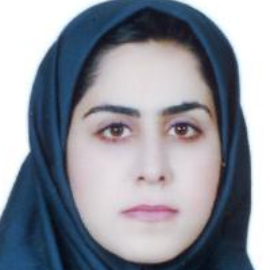
Zahra Bahmani
Work place: Department of Computer Engineering, Behbahan Khatam Alanbia University of Technology, Behbahan, Iran
E-mail: zahra.bahmani2009@gmail.com
Website:
Research Interests: Artificial Intelligence, Pattern Recognition, Image Compression, Image Manipulation, Image Processing
Biography
Zahra Bahmani was born in 1982. She received his BSc degree in Computer-Software Engineering from University of Isfahan, Isfahan, Iran in 2005 and completed then her MSc degree in Artificial Intelligence from Alzahra University, Tehran, Iran in 2011. She currently works as a Faculty Member at the Department of Computer Engineering, Behbahan Khatam Alanbia University of Technology, Behbahan, Iran. His research interests include Artificial Intelligence, Image Processing and Pattern Recognition.
Author Articles
Prediction of Performance Point of Semi-Rigid Steel Frames Using Artificial Neural Networks
By Zahra Bahmani Mohammad R. Ghasemi Seyed S. Mousaviamjad Sadjad Gharehbaghi
DOI: https://doi.org/10.5815/ijisa.2019.10.05, Pub. Date: 8 Oct. 2019
One of the main steps in the performance based seismic analysis and design of structures is determination of performance point where the nonlinear static analysis approach is used. The aim of this paper is to predict the performance point of semi-rigid steel frames using Artificial Neural Networks. As such, to generate data required for the prediction, several semi-rigid steel frames were modeled and their performance point was determined then. Ten input variables including number of bays, number of stories, bays width, moment of inertia of beams, cross sectional area of columns, cross sectional area of braces, rigidity degree of connections and soft story (existence or nonexistence) were considered in the prediction. In addition, the actual results were obtained at the presence of different earthquake intensity levels and soil types. Back Propagation with eleven different algorithms and Radial Basis Function Artificial Neural Networks were used in the prediction. The prediction process was carried out in two steps. In the first step, all samples were used for the prediction and the performance metrics were computed. In the second step, three of the best networks were selected, and the optimum number of samples was found considering a very slight reduction in the accuracy of the networks used. Finally, it was shown that, despite using rather limited number of samples, the generated Artificial Neural Networks accurately predict the performance point of semi-rigid steel frames.
[...] Read more.Other Articles
Subscribe to receive issue release notifications and newsletters from MECS Press journals